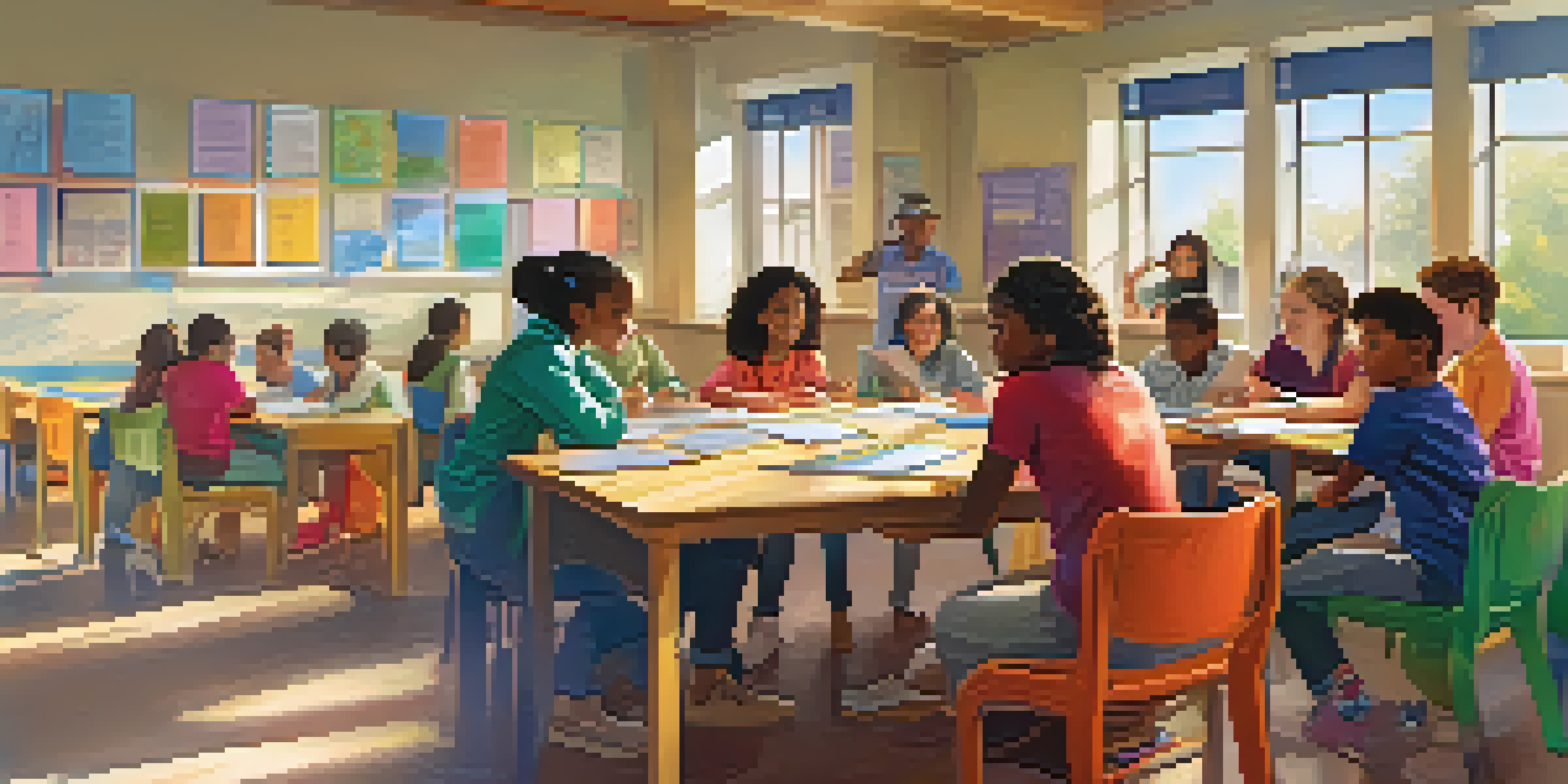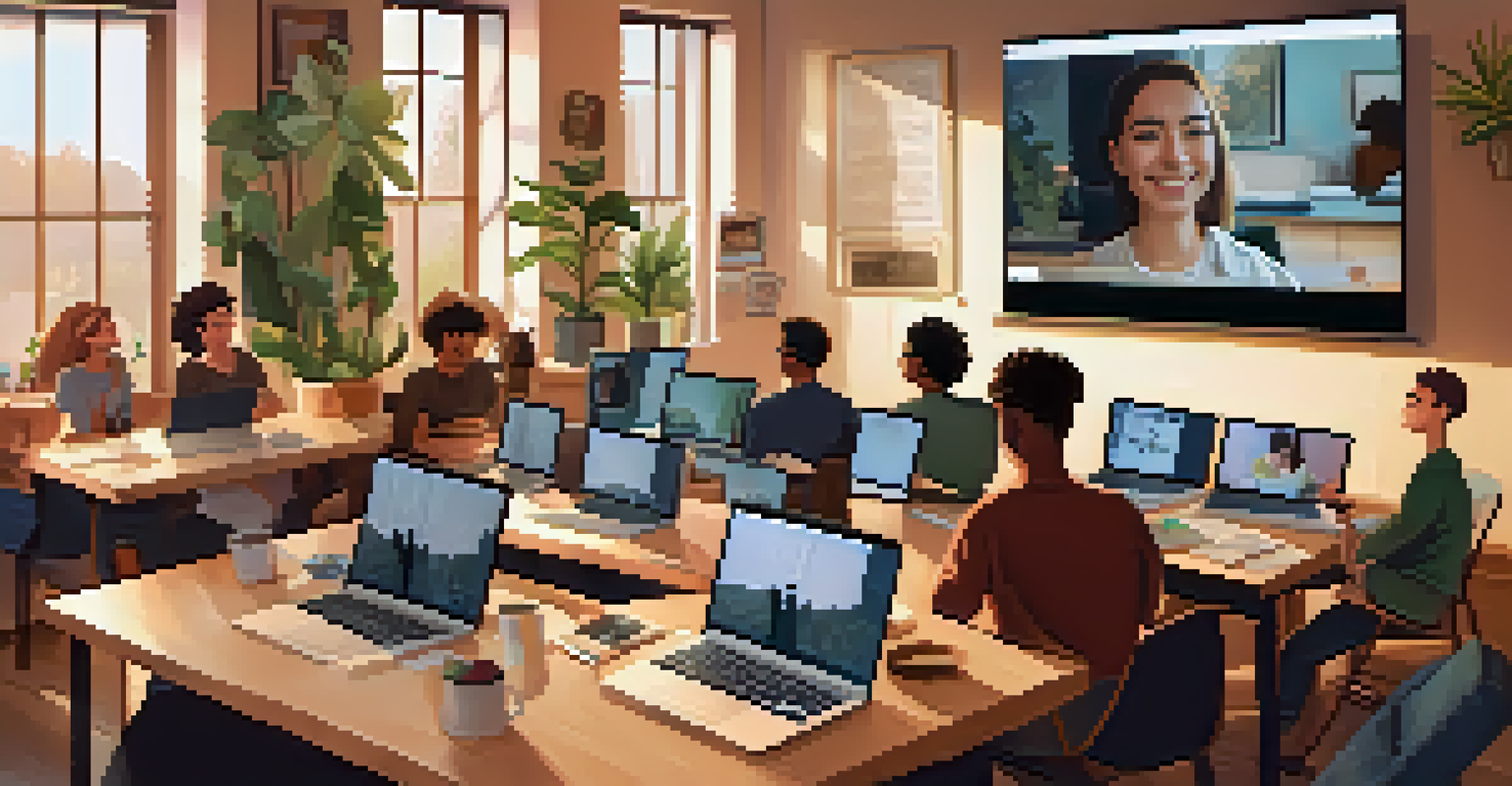Peer Learning as a Response to Traditional Teaching Limitations

Understanding the Limitations of Traditional Teaching
Traditional teaching methods often rely heavily on a one-size-fits-all approach, where a teacher delivers information to a passive audience. This can lead to disengagement, especially for students who may not grasp the material as quickly as their peers. Additionally, the lack of interaction in traditional settings can hinder the development of critical thinking and collaboration skills.
Tell me and I forget. Teach me and I remember. Involve me and I learn.
Many students find it challenging to ask questions in a large classroom setting, which can result in misunderstandings going unaddressed. This is particularly problematic in subjects that build on previously learned concepts, where a shaky foundation can lead to further difficulties down the line. Without the opportunity to clarify doubts in real-time, students may feel lost and frustrated.
Moreover, the emphasis on standardized testing in traditional education can stifle creativity and discourage exploration. Students may focus solely on memorization rather than understanding, which can lead to a superficial grasp of the material. In contrast, peer learning offers a dynamic alternative that encourages active participation and deeper comprehension.
What is Peer Learning and How Does it Work?
Peer learning is an educational approach where students learn from and with each other, fostering a collaborative environment. This method can take many forms, such as study groups, peer tutoring, or collaborative projects, allowing students to engage with the material in a more meaningful way. By discussing concepts and solving problems together, learners can clarify their understanding and gain new perspectives.

One of the key advantages of peer learning is that it creates a more relaxed atmosphere for students to ask questions and express their thoughts. Since students often feel more comfortable talking to their peers than to authority figures, this can lead to a richer exchange of ideas. Moreover, teaching a concept to someone else can reinforce the tutor's understanding, creating a win-win situation for both parties.
Peer Learning Enhances Engagement
By actively participating in their learning, students are more focused and motivated, leading to better retention of information.
Furthermore, peer learning encourages the development of soft skills such as teamwork, communication, and empathy. These skills are essential in both academic and professional settings, making peer learning an invaluable addition to any educational framework. By collaborating with their classmates, students not only deepen their knowledge but also prepare themselves for future interactions.
Benefits of Peer Learning for Students
Peer learning offers a myriad of benefits for students, starting with enhanced engagement. When students take an active role in their learning, they are more likely to stay focused and motivated. This increased engagement can lead to better retention of information, as learners are not just passively receiving knowledge but actively participating in the learning process.
Collaboration allows teachers to capture each other's fund of collective intelligence.
Additionally, students often find that learning from peers can make complex topics more digestible. When a fellow student explains a concept in simpler terms or relates it to a personal experience, it can resonate more deeply than traditional lectures. This relatable approach can demystify challenging subjects and make them more accessible for everyone involved.
Moreover, peer learning can foster a sense of belonging and community within the classroom. When students collaborate, they build relationships that can lead to increased support, both academically and socially. This sense of camaraderie can be especially beneficial in diverse classrooms, where students can learn from each other's unique backgrounds and experiences.
Implementing Peer Learning in the Classroom
To successfully implement peer learning, educators must create a supportive environment that encourages collaboration. This can be achieved by structuring activities that promote interaction, such as group discussions or project-based assignments. Setting clear expectations for participation and accountability can also help students feel more comfortable engaging with their peers.
Teachers can facilitate peer learning by strategically pairing or grouping students based on their strengths and weaknesses. For instance, pairing a student who excels in math with one who struggles can provide both learners with valuable insights. This not only helps the struggling student but also reinforces the stronger student's understanding of the material.
Collaboration Builds Essential Skills
Peer learning not only deepens understanding but also fosters critical soft skills like teamwork and communication.
Additionally, providing training on effective communication and collaboration skills can enhance the peer learning experience. Teaching students how to give constructive feedback and ask open-ended questions can empower them to support each other better. By equipping students with these tools, educators can create a more effective and enriching peer learning environment.
Challenges of Peer Learning and How to Overcome Them
While peer learning has numerous advantages, it is not without its challenges. One potential issue is the varying levels of knowledge and skills among students, which can lead to frustration or disengagement. To mitigate this, teachers can implement activities that allow students to work at their own pace or provide additional resources for those who need extra help.
Another challenge is ensuring that all students participate equally in peer learning activities. Sometimes, more dominant personalities may overshadow quieter students, leading to an imbalance in contribution. To address this, educators can use structured roles within groups, ensuring that each student has a specific task or responsibility during collaborative activities.
Lastly, it’s essential to continuously assess the effectiveness of peer learning initiatives. Gathering feedback from students about their experiences can provide valuable insights into what works and what doesn’t. By being open to adjustments and improvements, teachers can create a more effective peer learning environment that meets the diverse needs of all students.
Peer Learning in the Digital Age
In today's digital landscape, peer learning has transcended traditional classroom boundaries. Online platforms and tools enable students to connect and collaborate, regardless of their physical location. Virtual study groups, discussion forums, and collaborative projects can enhance the peer learning experience, making it more accessible and convenient.
Technology also allows for a wealth of resources that can supplement peer learning. Students can share articles, videos, and other materials that enhance their understanding of a topic. This not only enriches the learning experience but also encourages students to take initiative in their education, fostering a sense of ownership over their learning journey.
Digital Tools Expand Learning Horizons
Online platforms facilitate peer learning by enabling collaboration beyond the classroom, making education more accessible.
However, it's crucial to maintain the human element in digital peer learning. Encouraging regular video calls or face-to-face meetups can help build relationships and keep students engaged. By combining the advantages of technology with personal interactions, educators can create a robust and effective peer learning environment.
The Future of Peer Learning in Education
As education continues to evolve, peer learning is likely to play an increasingly prominent role. With a growing recognition of the limitations of traditional teaching methods, schools and universities are beginning to embrace collaborative learning strategies. This shift is supported by research that consistently shows the benefits of peer learning for student engagement and achievement.
Moreover, the rise of personalized learning approaches aligns well with peer learning principles. As educators seek to tailor their teaching to individual students' needs, peer learning provides an excellent framework for differentiation. By allowing students to collaborate and learn at their own pace, educators can better accommodate diverse learning styles and preferences.

Ultimately, the future of education may depend on our ability to foster collaborative and inclusive learning environments. By prioritizing peer learning alongside traditional methods, we can create a more dynamic and effective educational landscape that prepares students for the complexities of the modern world.